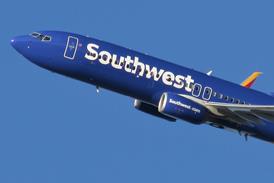Mike Martin
The commercialisation of space took a dramatic step forward at Farnborough yesterday with the unveiling of plans to market a wholly commercial space module (CSM) that can be attached to the International Space Station (ISS).The CSM is a joint venture between Boeing and Khrunichev State Research and Production Space Centre. With the formal launch of the marketing effort yesterday at the show, the CSM team says it could be ready for launch by mid-2002.Boeing denies the move was provoked by the scathing criticisms of Jeffrey Manber, head of MirCorp, who is trying to use the old Russian space station to leverage space commercialisation. Manber believes the existing space "establishment" is the biggest block to commercialisation.
Decision
"That has nothing to do with this decision," says Brewster Shaw, Boeing ISS vice-president. "It is to do with our desire to utilise an available asset." Commercial development, integration, launch and operation of the CSM is a major step in expanding global awareness about the use of space for private endeavours. A range of potential customers is now being sounded out, from research and technology-based companies eager to do experiments in microgravity or vacuum conditions through to those wanting to carry out Earth observation or communications work.
The CSM is a sister module to Zarya which was launched in November 1998 as the first component of ISS. The multi-purpose module can be used to deliver propellant and cargo to ISS and, when docked with the station, can provide storage, accommodation or workspace.
The module, launched aboard a Russian Proton rocket, can deliver 3,000 kg (6,600 lb) of wet and dry cargo and provide up to 20m3 (700ft3) of storage space. Final configuration of the module will depend on customer choice, says Shaw, but the aim is to be as flexible as possible.
Equipped
"The module will be equipped with 36 lockers so theoretically it could accommodate 36 different customers," he says.Experimental work would be carried out initially by astronauts or cosmonauts but, if the idea develops and there is demand, a dedicated scientist could be assigned to the module. The CSM is available because Khrunichev made a duplicate copy of Zarya but Shaw does not rule out building another commercial module from scratch if the demand warranted it.
The development comes against a background of criticism from MirCorp and Jeffrey Manber who is investing in commercially-based ideas to fly on Mir. Manber has accused NASA of being bureaucratic and fighting private companies. He was quoted recently as saying: "The chief obstacle to the commercialisation is NASA.
"He also complains that US aerospace companies have too much vested interest in maintaining the status quo in space.
Source: Flight Daily News























